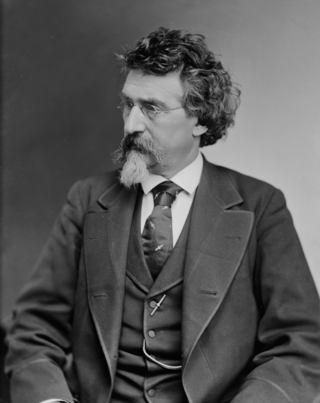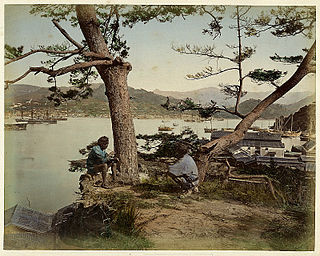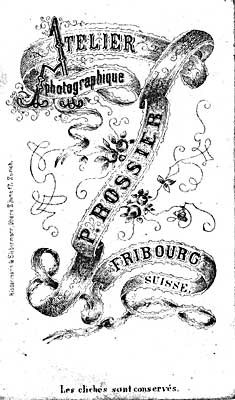
Wisconsin Dells is a city in Adams, Columbia, Juneau, and Sauk counties in the U.S. state of Wisconsin. A popular Midwestern tourist destination, Wisconsin Dells is home to several water parks and tourist attractions. The city had a population of 2,942 as of the 2020 census.

Mathew B. Brady was an American photographer. Known as one of the earliest and most famous photographers in American history, he is best known for his scenes of the Civil War. He studied under inventor Samuel Morse, who pioneered the daguerreotype technique in America. Brady opened his own studio in New York City in 1844, and went on to photograph U.S. presidents John Quincy Adams, Abraham Lincoln, Millard Fillmore and Martin Van Buren, among other public figures.

The Dells of the Wisconsin River, also called the Wisconsin Dells, meaning “valley”, is a 5-mile (8-km) gorge on the Wisconsin River in south-central Wisconsin, USA. It is noted for its scenery, in particular for its Cambrian sandstone rock formations and tributary canyons. The formations are divided into the "Upper Dells" and the "Lower Dells" by the Kilbourn Dam.

The American Civil War was the most widely covered conflict of the 19th century. The images would provide posterity with a comprehensive visual record of the war and its leading figures, and make a powerful impression on the populace. Something not generally known by the public is the fact that roughly 70% of the war's documentary photography was captured by the twin lenses of a stereo camera. The American Civil War was the first war in history whose intimate reality would be brought home to the public, not only in newspaper depictions, album cards and cartes-de-visite, but in a popular new 3D format called a "stereograph," "stereocard" or "stereoview." Millions of these cards were produced and purchased by a public eager to experience the nature of warfare in a whole new way.

Oscar Gustave Rejlander was a pioneering Victorian art photographer and an expert in photomontage. His collaboration with Charles Darwin on The Expression of the Emotions in Man and Animals has assured him a position in the history of behavioural science and psychiatry.

Henry Peach Robinson was an English pictorialist photographer best known for his pioneering combination printing - joining multiple negatives or prints to form a single image; an early example of photomontage. He joined vigorously in contemporary debates in the photographic press and associations about the legitimacy of 'art photography' and in particular the combining of separate images into one.

Henry Hamilton Bennett was an American photographer famous for his pictures of the Dells of the Wisconsin River and surrounding region taken between 1865 and 1908. The popularity of his photographs helped turn the city of Wisconsin Dells, Wisconsin into a tourist destination.

A photographic studio is often a business owned and represented by one or more photographers, possibly accompanied by assistants and pupils, who create and sell their own and sometimes others’ photographs.

Hand-colouring refers to any method of manually adding colour to a monochrome photograph, generally either to heighten the realism of the image or for artistic purposes. Hand-colouring is also known as hand painting or overpainting.
Maison Bonfils was a French family-run company producing and selling photography and photographic products from Beirut from 1867 until 1918, from 1878 on renamed "F. Bonfils et Cie". The Bonfils ran the first and, in their time, most successful photographic studio in the city. Maison Bonfils produced studio portraits, staged biblical scenes, landscapes, and panoramic photographs.

Adolfo Farsari was an Italian photographer based in Yokohama, Japan. His studio, the last notable foreign-owned studio in Japan, was one of the country's largest and most prolific commercial photographic firms. Largely due to Farsari's exacting technical standards and his entrepreneurial abilities, it had a significant influence on the development of photography in Japan.

Gertrude Käsebier was an American photographer. She was known for her images of motherhood, her portraits of Native Americans, and her promotion of photography as a career for women.

Uchida Kuichi was a pioneering Japanese photographer from Nagasaki. He was greatly respected as a portrait photographer and was the only photographer granted a sitting to photograph the Emperor Meiji.

Pierre Joseph Rossier was a pioneering Swiss photographer whose albumen photographs, which include stereographs and cartes-de-visite, comprise portraits, cityscapes, and landscapes. He was commissioned by the London firm of Negretti and Zambra to travel to Asia and document the progress of the Anglo-French troops in the Second Opium War and, although he failed to join that military expedition, he remained in Asia for several years, producing the first commercial photographs of China, the Philippines, Japan and Siam. He was the first professional photographer in Japan, where he trained Ueno Hikoma, Maeda Genzō, Horie Kuwajirō, as well as lesser known members of the first generation of Japanese photographers. In Switzerland he established photographic studios in Fribourg and Einsiedeln, and he also produced images elsewhere in the country. Rossier is an important figure in the early history of photography not only because of his own images, but also because of the critical impact of his teaching in the early days of Japanese photography.

Valentine Blanchard was a prominent English photographer who was widely recognized for his artistic and technical contributions to photography in the 1860s. Both his landscape and his portrait photography were highly valued by the public, commanding high prices and selling well. He was much appreciated by his peers for the technical innovations he pioneered in photographic processes.

Frederick Gutekunst was an American photographer from Philadelphia, Pennsylvania. He opened his first photographic portrait studio with his brother in 1854 and successfully ran his business for sixty years. He grew to national prominence during the American Civil War and expanded his business to include two studios and a large phototype printing operation. He is known as the "Dean of American Photographers" due to his high quality portraits of dignitaries and celebrities. He worked as the official photographer of the Pennsylvania Railroad and received national and international recognition for his photographs of the Gettysburg battlefield and an innovative 10-foot long panoramic photograph of the Centennial Exposition.

The Jacob Weber House is located in Wisconsin Dells, Wisconsin.
The solar camera, or solar enlarger, is an ancestor of the darkroom enlarger, and was used in the mid-to-late 19th century to make photographic enlargements from negatives.
The Kilbourn Dam is a concrete hydroelectric dam on the Wisconsin River at Wisconsin Dells, Wisconsin. It is owned and operated by Alliant Energy.



















